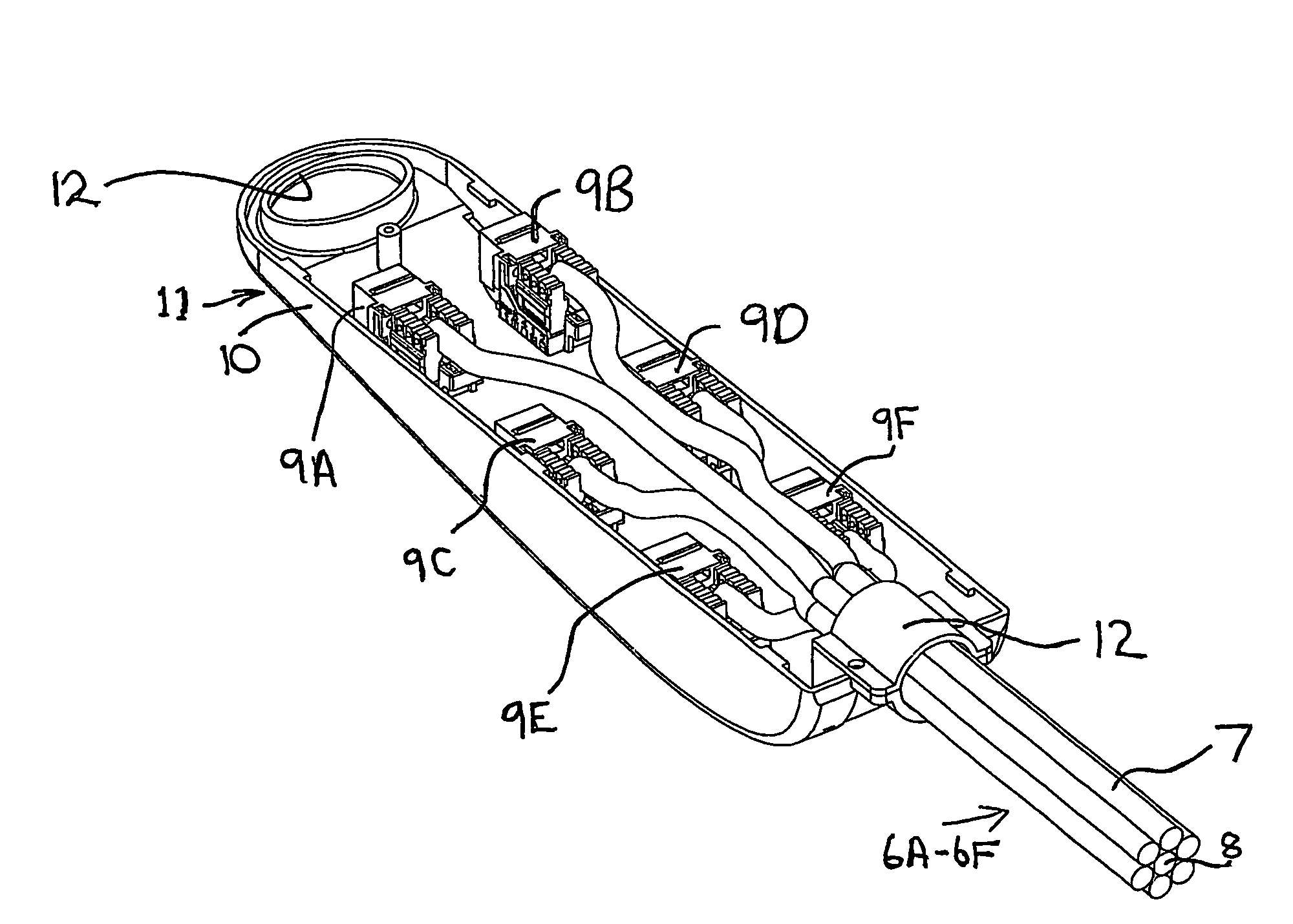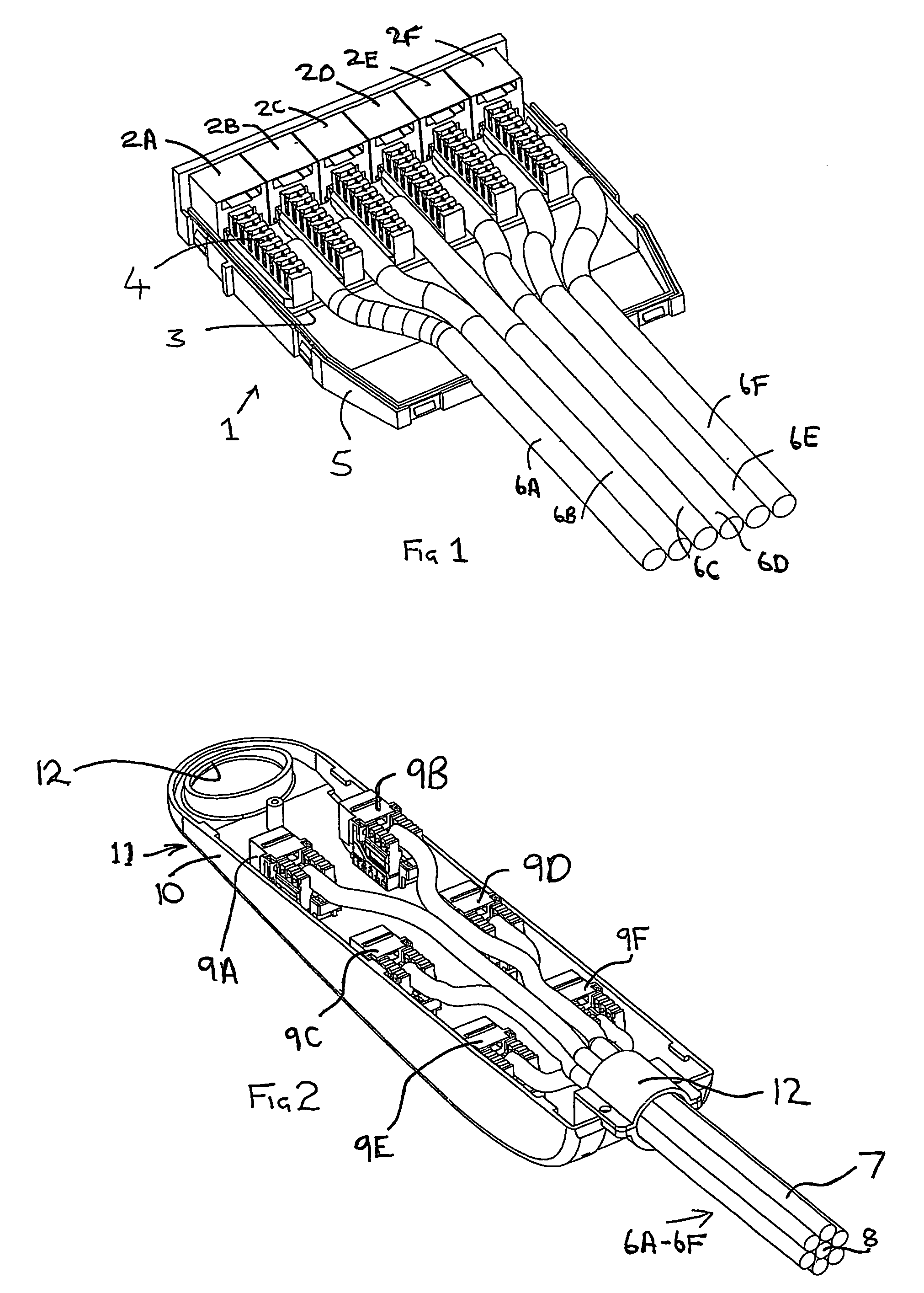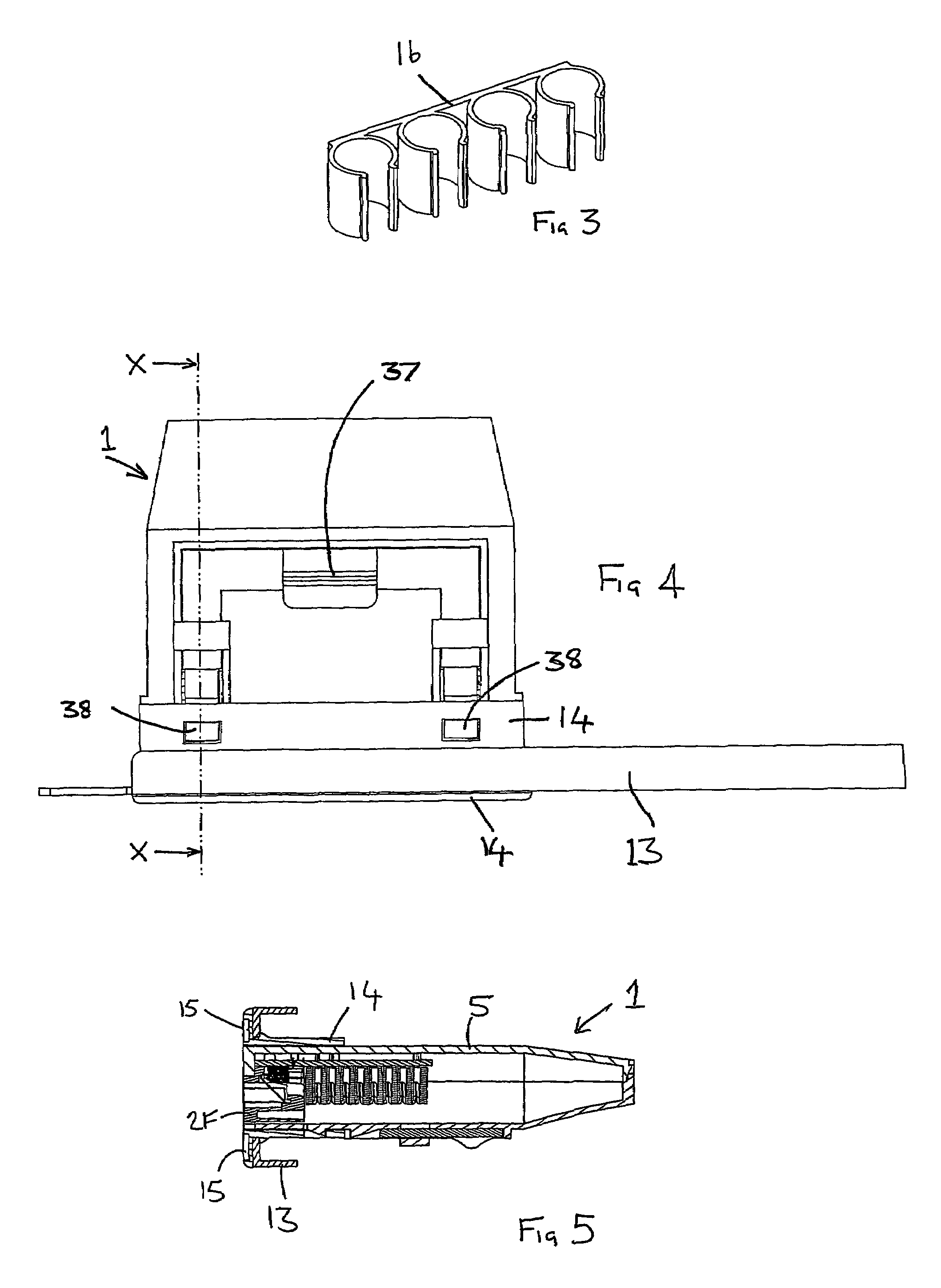Structured cabling system and method
- Summary
- Abstract
- Description
- Claims
- Application Information
AI Technical Summary
Benefits of technology
Problems solved by technology
Method used
Image
Examples
Embodiment Construction
[0023]Referring firstly to FIG. 1 there is illustrated a multiple jack assembly 1 comprising six individual jacks 2A-2F. Each jack is mounted on a printed circuit board (PCB) 3 and is provided with a respective integrated desktop connector (IDC connector) 4. The jacks and PCB are mounted within a casing 5, only the base of which is shown in FIG. 1. In use, the casing 5 will also include a cover which is a snap-fit with the base so as to enclose the jacks, the PCB and IDC connectors. The snap-fit between the base and the cover of the casing may grip the individual data cables 6A-6F to provide strain relief. Alternatively, the individual cables may be clamped to the base by suitable clamping means. Six data cables 6A-6F are terminated to respective IDC connectors of the jacks 2A-2F to the standard required (typically Cat 5, Cat 5e or Cat 6) by the installation in question, such that the eight individual wires in each data cable are connected to respective contacts of the jack to which...
PUM
 Login to View More
Login to View More Abstract
Description
Claims
Application Information
 Login to View More
Login to View More - R&D
- Intellectual Property
- Life Sciences
- Materials
- Tech Scout
- Unparalleled Data Quality
- Higher Quality Content
- 60% Fewer Hallucinations
Browse by: Latest US Patents, China's latest patents, Technical Efficacy Thesaurus, Application Domain, Technology Topic, Popular Technical Reports.
© 2025 PatSnap. All rights reserved.Legal|Privacy policy|Modern Slavery Act Transparency Statement|Sitemap|About US| Contact US: help@patsnap.com



